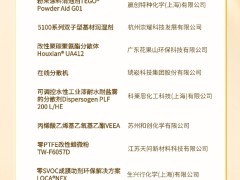据烃加工网站12月15日报道,霍尼韦尔宣布与得克萨斯大学奥斯汀分校(UT Austin)达成一项协议,实现以较低成本捕获发电厂和重工业排放的二氧化碳。
霍尼韦尔将利用得克萨斯大学奥斯汀分校专有的先进溶剂技术开发针对电力、钢铁和水泥等工厂的碳捕获新解决方案,以降低新设备或现有设备中燃烧烟气产生的碳排放。该解决方案为这些部门提供了有效手段,帮助其满足监管要求和可持续发展目标。
霍尼韦尔已承诺到 2035 年在其运营的设施中实现碳中和。
与得克萨斯大学奥斯汀分校的许可协议扩展了霍尼韦尔领先的碳捕集技术组合。霍尼韦尔通过其专业的碳解决方案,已经捕获1500万吨/年二氧化碳,将其存储或进行利用。霍尼韦尔称,公司有能力通过其在全球实施的项目捕获 4000万吨/年二氧化碳。
得克萨斯大学奥斯汀分校的专利解决方案采用先进溶剂,小规模设备,可以在低成本投入的情况下,高效捕获二氧化碳。对于典型的发电厂(650 MW 容量),使用该溶剂碳捕集技术每年可捕集约340吨二氧化碳,相当于每年从道路上移除近735,000辆汽车。
该二氧化碳捕获技术可用于现有设备或新建设备。在该过程中,二氧化碳被吸收到胺溶剂中,然后被送到汽提塔,实现二氧化碳与溶剂分离,分离出的二氧化碳经压缩后封存地下或使用。
据国际能源署称,2020年,全球 CCUS 项目捕获和储存/使用的二氧化碳为 4000吨。为了与 IEA 可持续发展愿景保持一致,即:将全球温度上升限制在 1.65℃以下,CCUS 项目容量必须增加 20 倍以上,即到2030 年需要捕获 84000吨二氧化碳。
贾丽 编译自 烃加工
原文如下:
Honeywell, University of Texas to collaborate on new CCS technology
Honeywell announced an agreement with The University of Texas at Austin that will enable the lower-cost capture of CO2 emissions from power plants and heavy industry.
Honeywell will leverage UT Austin's proprietary advanced solvent technology to create a new offering targeted at power, steel, cement and other industrial plants to lower emissions generated from combustion flue gases in new or existing units. The solution provides these sectors with an additional tool to help meet regulatory requirements and sustainability goals.
Honeywell has committed to achieve carbon neutrality in its operations and facilities by 2035.
The licensing arrangement with UT Austin expands Honeywell's leading carbon capture technology portfolio. Today, 15 MMtpy of CO2 is being captured and used in storage/utilization applications through Honeywell's CO2 Solutions process expertise. Honeywell currently has the capacity to capture 40 MMtpy through its installed projects worldwide.
UT Austin's patented solution utilizes an advanced solvent, which enables CO2 to be captured at a lower cost through greater efficiency using smaller equipment. For a typical power plant (650 MW capacity), applying advanced solvent carbon-capture technology would enable the capture of about 3.4 MM tons of CO2 annually, equivalent to removing nearly 735,000 cars from the road each year.
This CO2 removal technology can be retrofitted within existing plants or included as part of a new installation. In this process, CO2 is absorbed into an amine solvent and then sent to a stripper where CO2 is separated from the solvent. This CO2 is then compressed for geological sequestration or used for other purposes.
In 2020, CCUS projects worldwide were capturing and storing/using 40 MM metric tpy of CO2, according to the International Energy Agency (IEA). In order to align with the IEA Sustainable Development Scenario, which demonstrates a pathway to limit global temperature rise by less than 1.65º C, CCUS project capacity must increase more than 20 times to enable capture of 840 MM metric tpy of CO2 by 2030.
免责声明:本网转载自其它媒体的文章,目的在于弘扬石化精神,传递更多石化信息,并不代表本网赞同其观点和对其真实性负责,在此我们谨向原作者和原媒体致以敬意。如果您认为本站文章侵犯了您的版权,请与我们联系,我们将第一时间删除。







